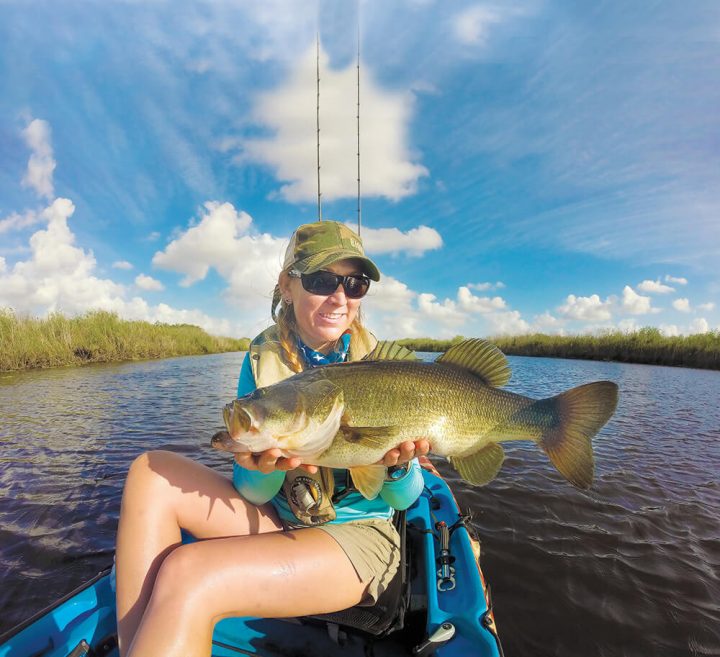Spring is the time of year when it’s good to be a kayak bass angler. With warming water temperatures, all the black bass are thinking of the spawn. They become easier to pattern, easier for anglers in the yak to target, and it’s just more fun to fish for them.
It’s not even absolutely necessary to have electronics when the fish move up and begin to feed heavily during prespawn. And when they hit the beds, finding fish in many fisheries is as simple as paddling the shallows looking for them. The major black bass species anglers target—smallmouth, largemouth and spotted bass—all behave a little differently from each other this time of year. And the timing of the spawn will always vary depending on the species, weather and water conditions where you fish. But one thing remains constant. The fish will be looking for warmer water and forage near spawning areas, and this is where you should start your search.
For kayak anglers on big reservoirs, pre-trip reconnaissance is a very big deal. Limited range means you can’t just go out on the lake and run every pocket looking for fish on your electronics. Using satellite imagery from programs like Google Earth and old-fashioned topographical maps allows you to narrow down a search area within paddling range of a selected put-in. Look for areas that might serve as transition areas from main-lake deep-water structure, where bass spend the winter, up to shallower water where they will spawn. A smart kayaker will choose a put-in that puts them within range of several such areas.
Now, smallmouths like a hard bottom for spawning. Pea gravel, fine shale or hard clay substrate on points, humps and flats in the 10- to 15-foot range is where they will bed. Largemouth bass like sandy flats or pockets in 2 to 5 feet of water. This makes them a very good target for kayakers without electronics, as their beds can be seen clearly in reasonably clear water. Spotted bass will be somewhere in between. They prefer to bed on hard clay in 5 feet or deeper. If you don’t have electronics, the topography and make-up of the bank can clue you in to what lies beneath.
Some might have an aversion to targeting fish on the bed. That’s fine, because fish spawn in waves, and there will be fish in all stages in a given area. Prespawn and postspawn bass can be found wherever baitfish congregate near spawning areas.
Largemouth bass feed in the channels running through or to spawning areas. They can often be seen chasing bait on the surface. For smallies and spots, there is a huge benefit to having electronics to spot bait and fish, although topwater action can also erupt at any time near the humps and sloping points where they spawn.
Pack your jerkbaits, crankbaits, spinnerbaits and topwater plugs, as well as soft plastics for swimming and fishing beds. There’s no telling what they’ll key in on, but chances are they will be hungry.
